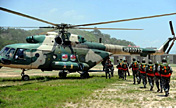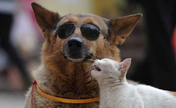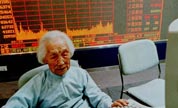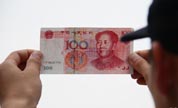

Taxi is considered as a city’s "business card" as its development reflects the progress of the city. The scales and type of Beijing's taxi cab has undergone big changes in 30 years: from yellow minivans, to Xiali, Fukang, and Jetta, and then Hyundai running everywhere in the city today; now hybrid electric taxi and barrier-free taxi already hit the road.
Taxi service had experienced fast growth in 1980s, and it served only people from other cities or foreigners, because taxi fare was high comparing with people’s income in 1980s. Taxi fare from 1984 to 1996 was 10 yuan for 10 kilometers. The taxi cabs in service were mainly yellow minivans, which people called “miandi”. And fare for a ride was 10 yuan for the initial distance of 3 kilometers, and 2 yuan per additional kilometer.
With the increased taxi volume in Beijing in 1990s, taxi fare remained low. From 1996 to 1998, taxi fare was different relying on different type of car. The lowest price was 1 yuan per additional kilometer, and the highest is 2 yuan per additional kilometer. Although different type of taxicabs met the needs of different passengers, it was hard for the government to manage, and different types and colors was not good for the appearance of the city either.
In 2006, Beijing increased the taxi fare. It rose from 1.6 yuan to 2 yuan per kilometer, but 10 yuan for first 3 kilometer remained unchanged. Hyundai and Volkswagen taxi cabs gradually replaced Xiali and Fukang to win taxi market.
Taxi fare in Beijing had remained unchanged for seven years until new policy was announced by Beijing Development and form Commission on June 6, 2013. The starting fare will increase from 10 to 13 yuan for the first 3 kilometers and fare per subsequent kilometer increased to 2.3 yuan, and 1 yuan was charged for fuel surcharge per ride. The new price plan took effect on June 10, 2013.
 |  |
 Nanjing MAC conducts parachute training
Nanjing MAC conducts parachute training Special operation members have joint escorting training
Special operation members have joint escorting training Angelina Jolie urges UN to tackle sexual violence
Angelina Jolie urges UN to tackle sexual violence Mandela's condition suddenly worsens
Mandela's condition suddenly worsens  Dog carrying cat down street: sweet couple
Dog carrying cat down street: sweet couple Girls locked in cage-like tricycle on their way home
Girls locked in cage-like tricycle on their way home Nightclub girls:
Nightclub girls:  Children frolic at fountain in NE China
Children frolic at fountain in NE China Cos girls shining at Kafu Comic-Con
Cos girls shining at Kafu Comic-Con China's eagle painter Zhang Fangbai
China's eagle painter Zhang Fangbai Look! Those angry birds in real life!
Look! Those angry birds in real life! Ni Ni covers the Femina Magazine
Ni Ni covers the Femina Magazine Chinese investors' happiness and sadness
Chinese investors' happiness and sadness  Chinese warned of high quality counterfeit notes
Chinese warned of high quality counterfeit notes President Xi talks with astronauts
President Xi talks with astronauts